
A kitchen garden brings this joy to your doorstep, allowing you to grow organic produce, save money, and reduce your carbon footprint. There is something incredibly satisfying about stepping out into your garden and picking fresh herbs, vegetables, or fruits for your next meal. Plus, it’s healthier and fresher than anything store-bought. Whether you have a sprawling backyard or just a small balcony, creating a kitchen garden is easier than you think. Let’s dive into how you can start your kitchen garden and enjoy the benefits of fresh, homegrown produce.
Plan Your Kitchen Garden Space
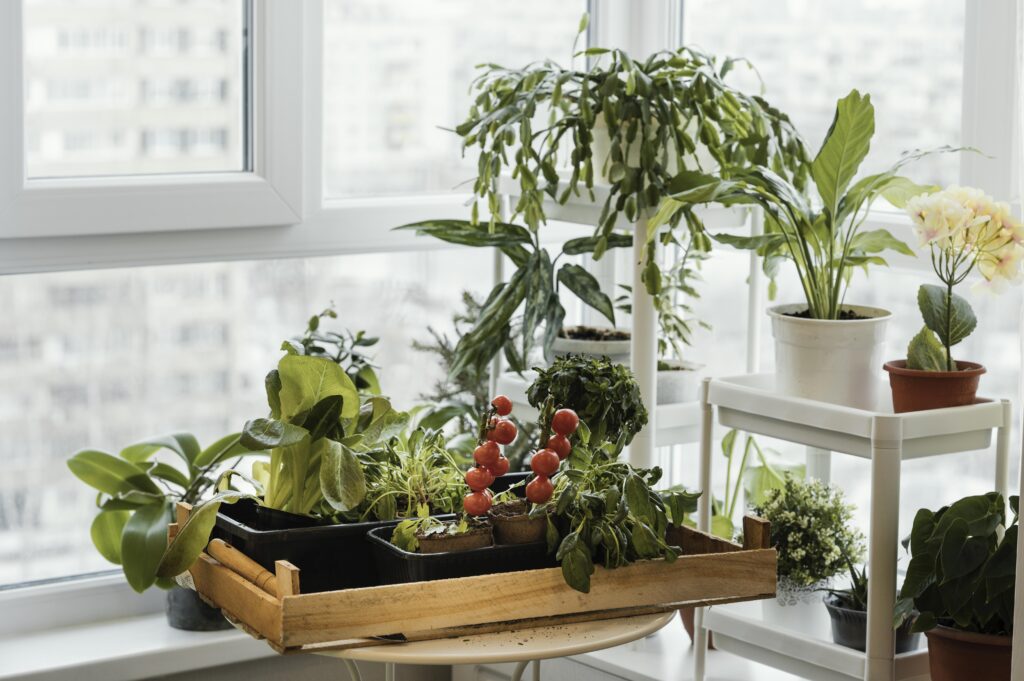
The first step in creating a kitchen garden is to assess the available space. You don’t need a huge yard. Many vegetables and herbs can be grown in small spaces, containers, or vertical gardens.
For small spaces: Consider container gardening, hanging baskets, or a vertical garden on a wall or fence. Herbs like basil, mint, and parsley, or veggies like tomatoes and peppers, thrive in pots.
For larger spaces: If you have a yard, dedicate a section to raised garden beds. These provide better drainage and make it easier to control soil quality. Ensure the spot gets plenty of sunlight (at least 6-8 hours a day), as most vegetables need full sun.
Tip: If you’re new to gardening, start small. Focus on a few easy-to-grow plants and expand as you become more comfortable.
Choose the Right Kitchen Garden Plants
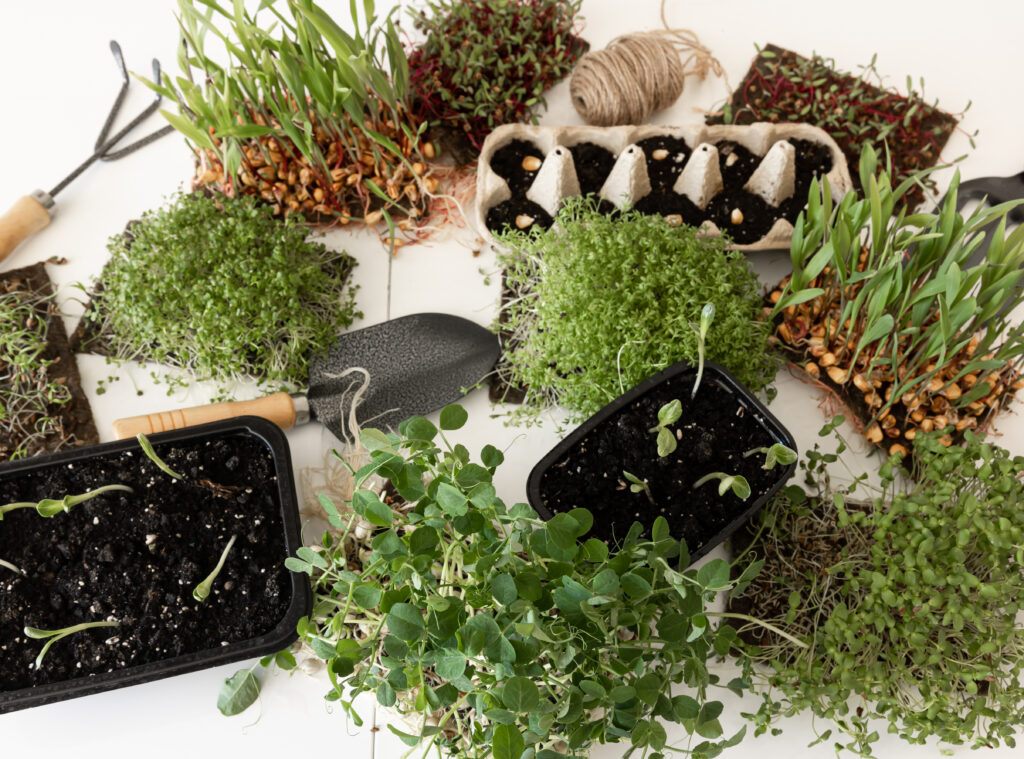
Remember to choose the right plants for your kitchen garden by considering your climate, available space, and the time you can dedicate to garden care.
Herbs: Basil, cilantro, parsley, thyme, mint, and chives are some of the easiest to grow. They are perfect for small spaces and thrive in containers.
Vegetables: Consider growing tomatoes, peppers, spinach, radishes, and lettuce as they are great for beginners and require relatively low maintenance while providing a steady harvest.
Fruits: When it comes to fruits, strawberries and dwarf varieties of fruit trees like lemons or figs can thrive in pots, making them suitable for limited spaces.
Tip: Mix faster-growing plants such as lettuce and radishes with slower-growing vegetables like carrots and broccoli to ensure a continuous harvest.
Prepare the Soil
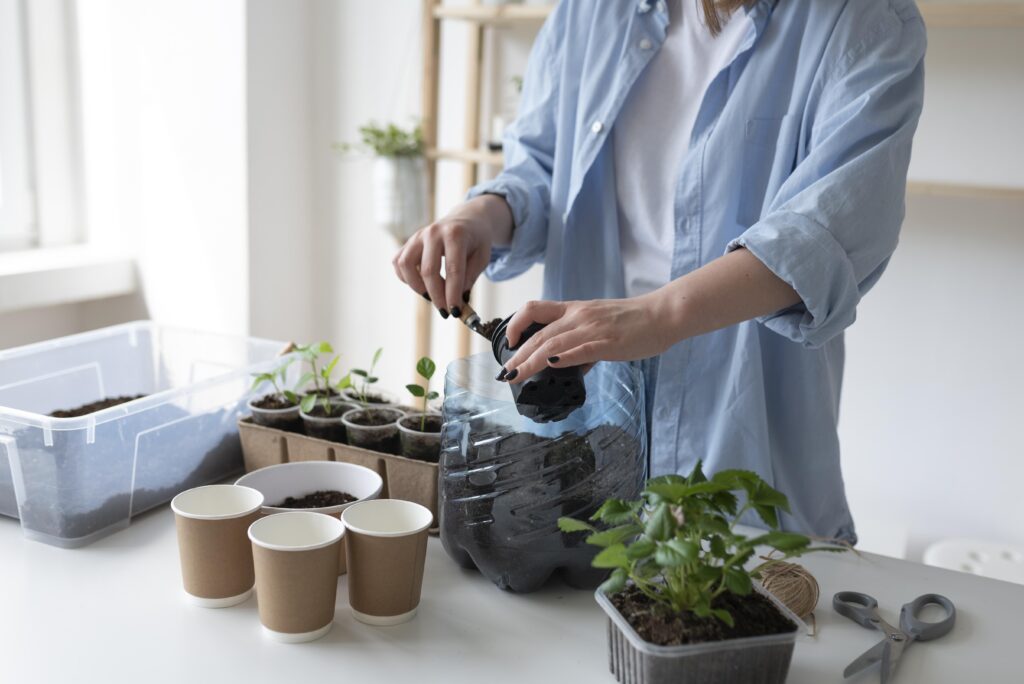
High-quality soil is key to a thriving kitchen garden. Nutrient-rich soil is essential for nurturing strong, productive plants.
For container gardens: It’s best to use a premium potting mix specifically made for growing vegetables and herbs. Such mixes typically include a combination of soil, compost, and essential nutrients.
For in-ground or raised beds: Enhance your soil by blending organic compost or thoroughly decomposed manure to boost nutrient levels. Ensure proper drainage in the soil, as excessive water can result in root rot.
Tip: Testing the pH level of your soil can determine its suitability for growing specific plants. Most vegetables thrive in slightly acidic to neutral soil (pH 6-7).
Water Wisely
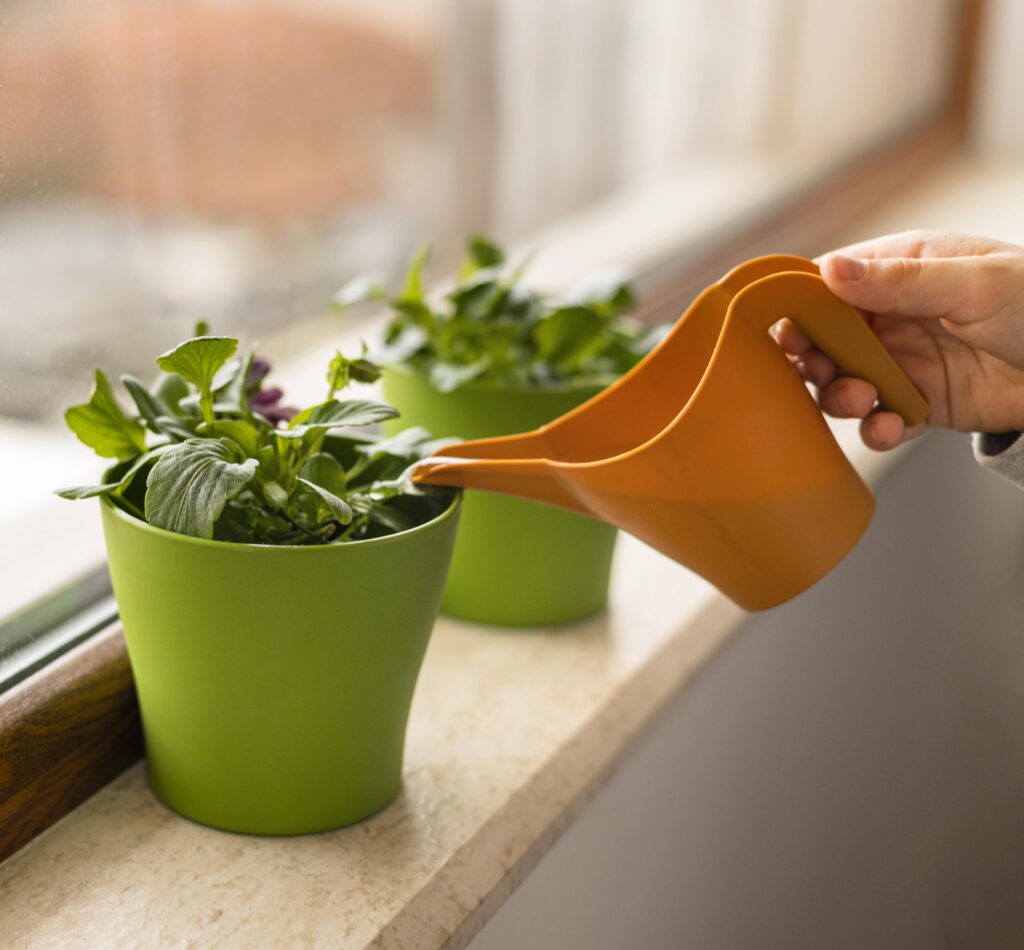
Watering is crucial, but the amount and frequency depend on the plant type and the weather. Giving too much water can be as damaging as not giving enough, so it’s crucial to find the right balance.
Water in the morning: Early watering provides plants with the necessary moisture before the sun becomes too intense, which helps prevent water from evaporating.
Check the soil: Test if the soil is still damp. Insert your finger about an inch deep into the soil; if it’s dry, then it’s time to water.
Utilize mulch: Placing mulch around plants can help preserve soil moisture and decrease the need for frequent watering.
Tip: Consider using drip irrigation systems for larger kitchen gardens. These systems slowly deliver water directly to the plant’s roots, reducing water waste and keeping the leaves dry.
Harvest Your Kitchen Garden Regularly
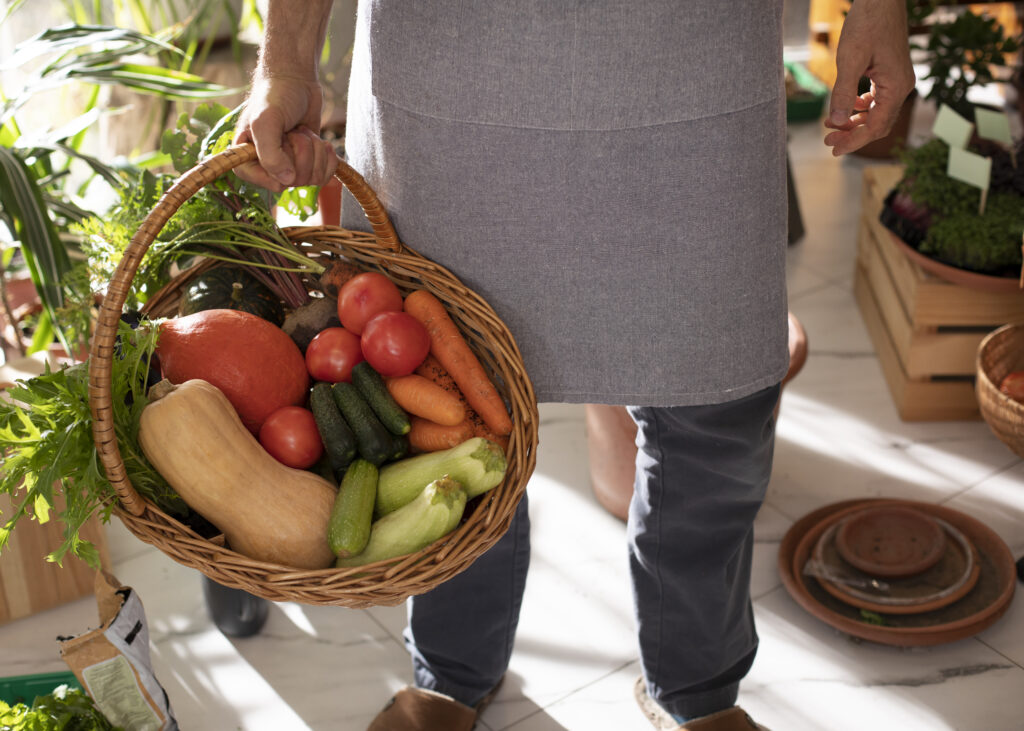
One of the greatest advantages of having a kitchen garden is being able to enjoy the fruits (and vegetables) of your labor. Regular harvesting encourages plants to produce more.
Herbs: Pinch off leaves as needed, but avoid letting them flower. Harvesting regularly will encourage bushier growth.
Vegetables: Harvest vegetables at their peak ripeness for the best flavor. Check for signs such as size, color, and texture to know when it’s time to pick them.
Tip: If you grow fast-growing crops like lettuce or spinach, plant them in succession every few weeks to ensure a continuous harvest throughout the season.
Use Organic Practices
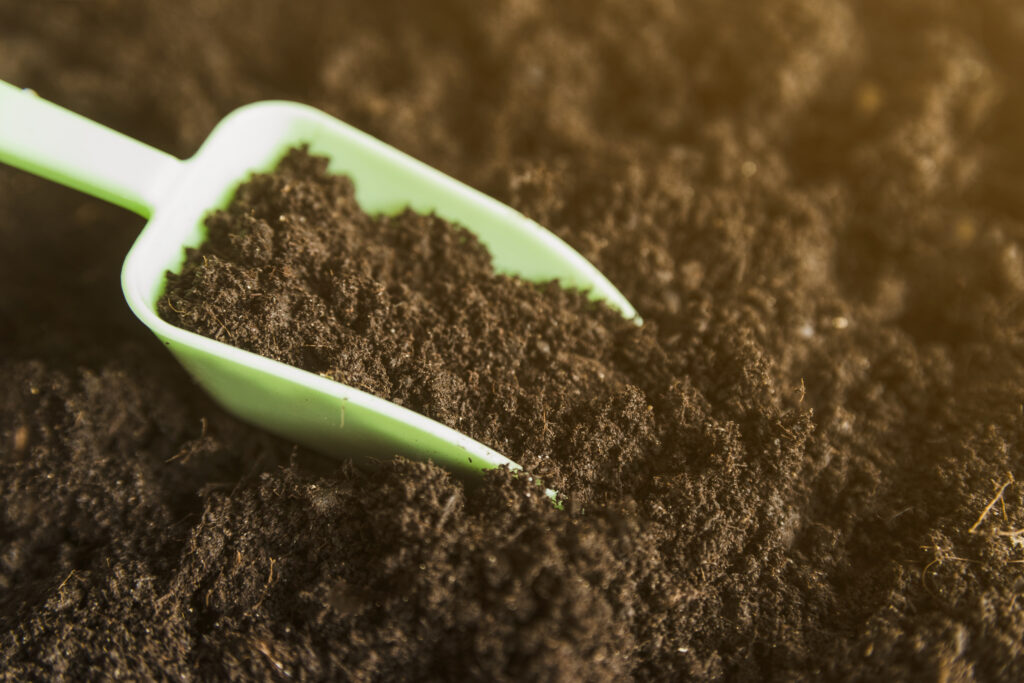
One of the benefits of having a kitchen garden is being aware of exactly what is going into your food. Avoid harmful chemicals by implementing organic gardening practices.
Natural fertilizers: Use compost, organic matter, or homemade fertilizers such as banana peels or eggshells to nourish your plants.
Pest control: Use natural pest control methods such as Neem oil or introduce beneficial insects like ladybugs to manage pests without resorting to chemical pesticides.
Tip: Companion planting is an effective way to deter pests. For instance, planting marigolds near tomatoes can help repel harmful insects.
Make Kitchen Gardening Fun and Creative
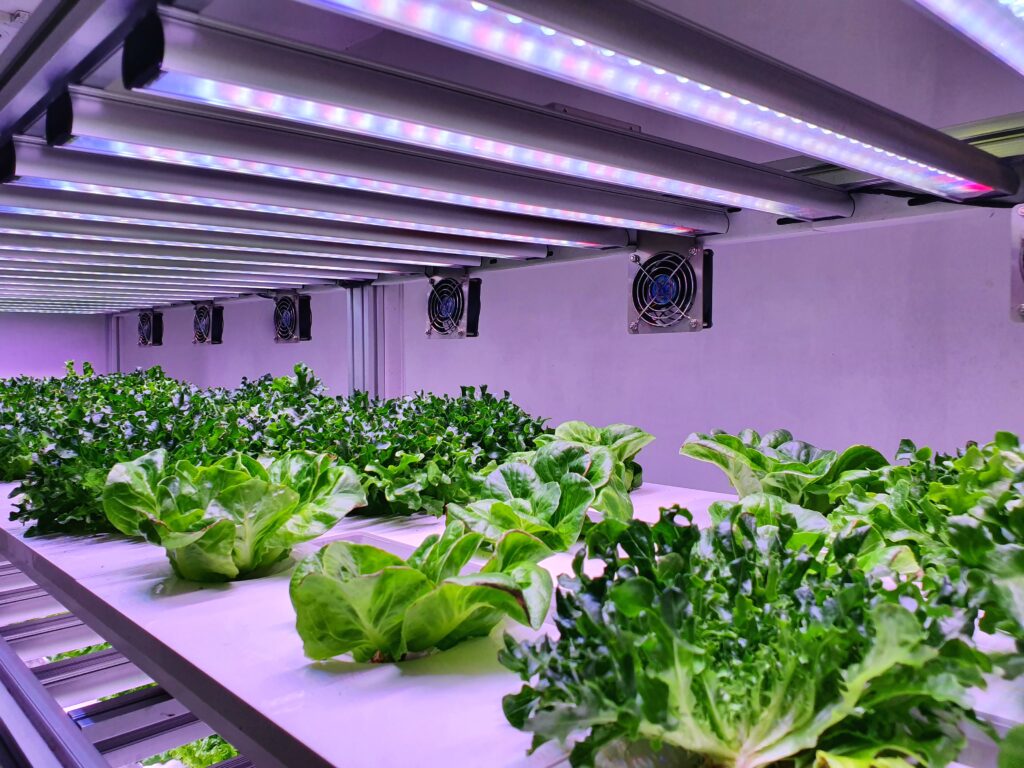
Think of your kitchen garden as more than just functional. Make it a fun and creative space that you enjoy spending time in, whether you have a small patio or a larger outdoor garden. Personalize it in ways that reflect your style.
Decorate: Add garden markers, trellises, or decorative pots to liven up your space.
Involve your family: Get the kids involved in planting and harvesting. It’s a great way to teach them about healthy eating and sustainability.
Grow what you love: Focus on the fruits, veggies, and herbs you and your family enjoy the most. There’s no better reward than harvesting something you’re excited to cook with.
Final Thoughts
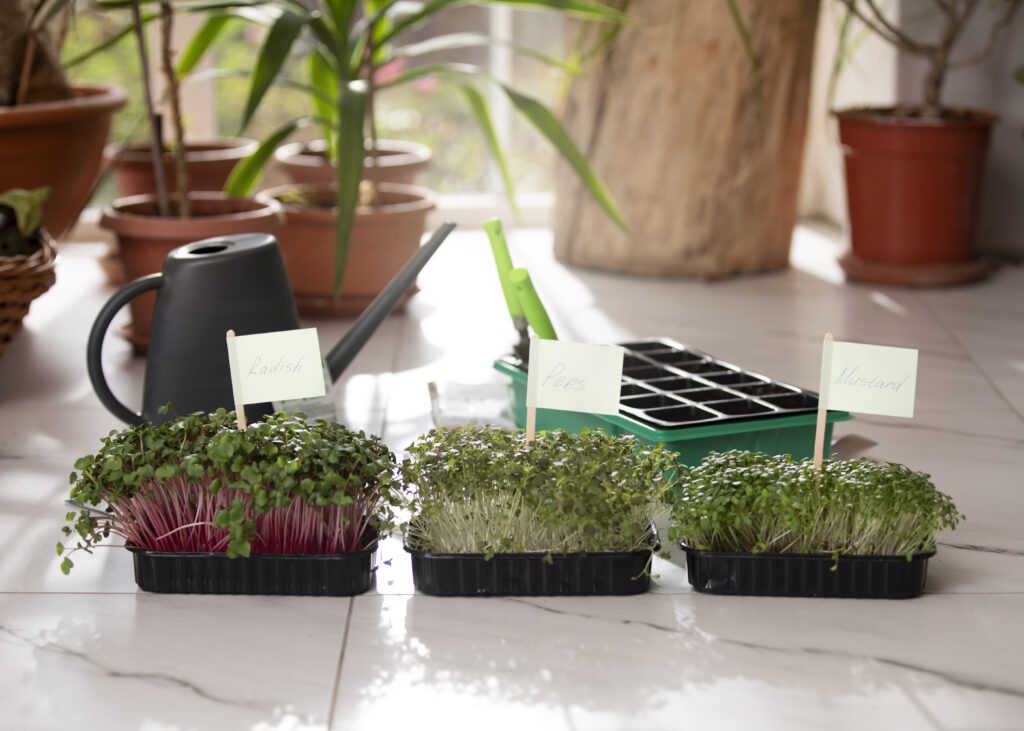
Creating a kitchen garden is a step toward a healthier, sustainable lifestyle. Whether you’re growing herbs or vegetables, a kitchen garden offers fresh produce at your fingertips. Gardening has mental and physical health benefits, such as reducing stress and promoting a sense of accomplishment. With careful planning and the right plants, you can create a thriving garden that brings beauty and bounty to your home. Start small, learn as you grow, and soon you’ll be enjoying delicious, homegrown produce in every meal. Happy gardening!
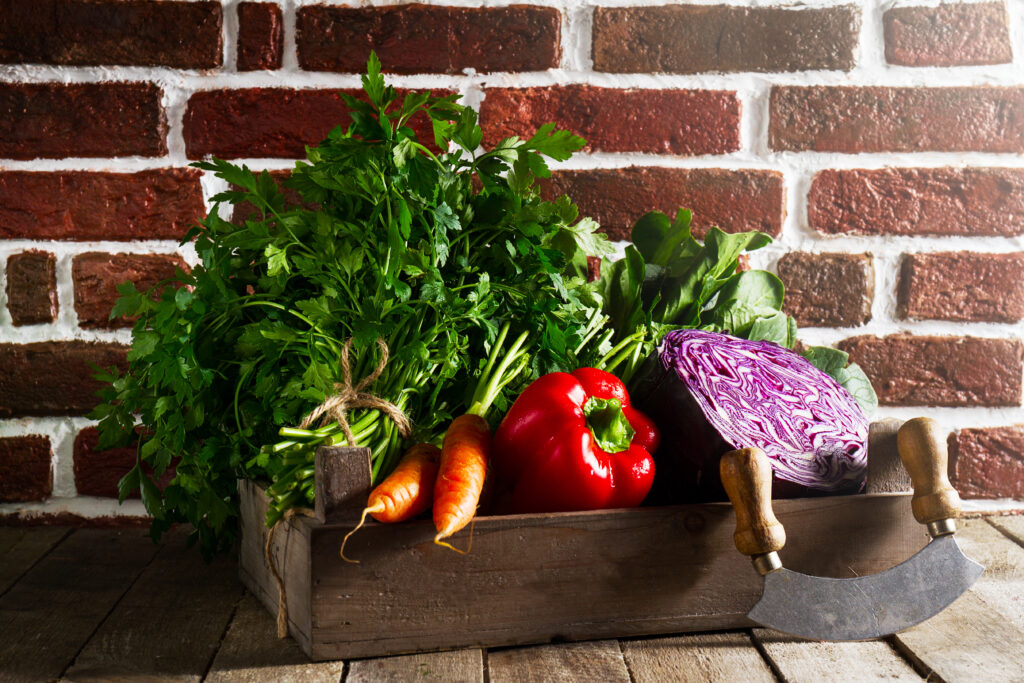


Pingback: Exploring Hydroponics in Modern Home Gardening - Organic Kokan
Pingback: How To Protect Vegetables In Hot Weather - Organic Kokan
Pingback: Microgreens: Grow Superfoods at Home in 7 Days - Organic Kokan